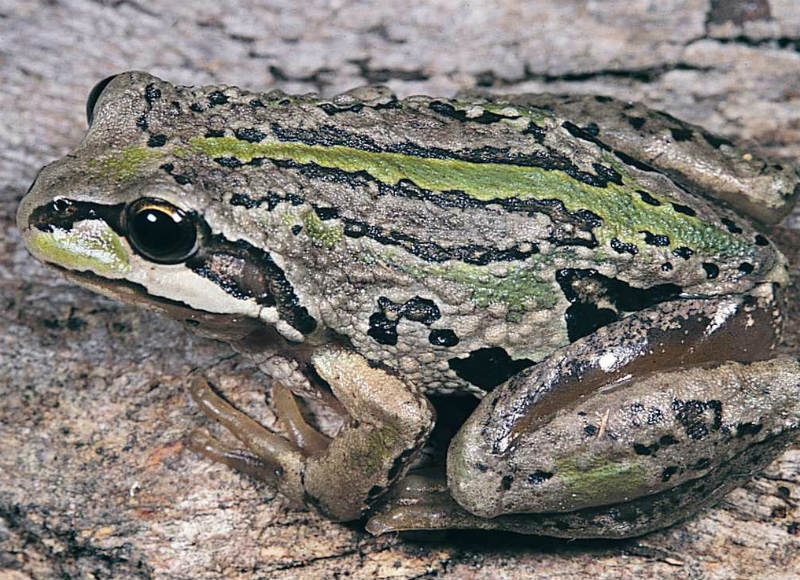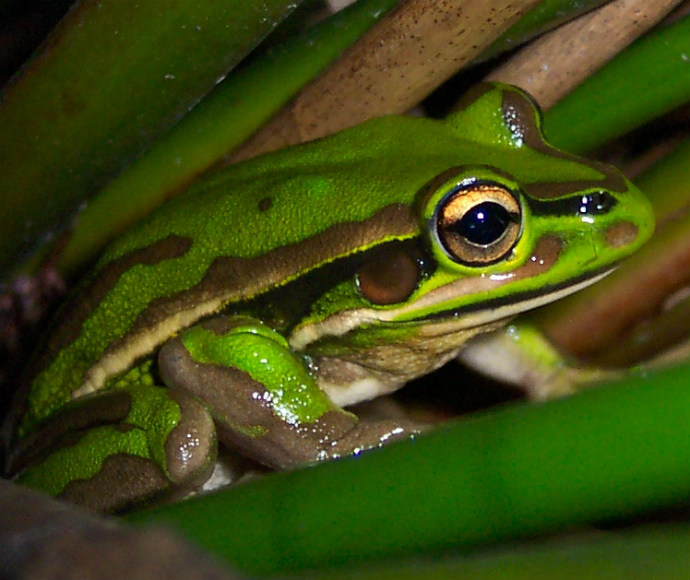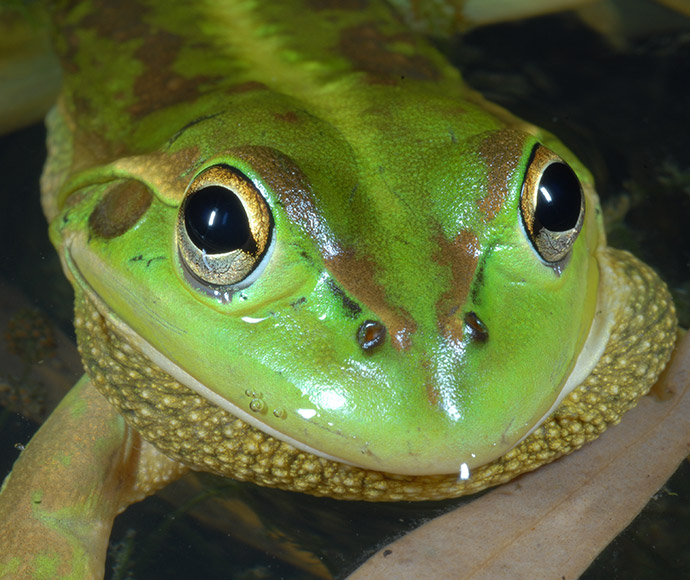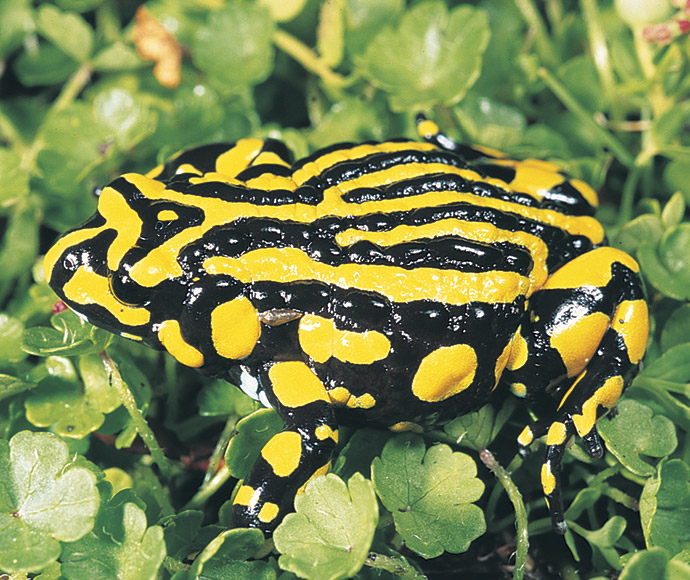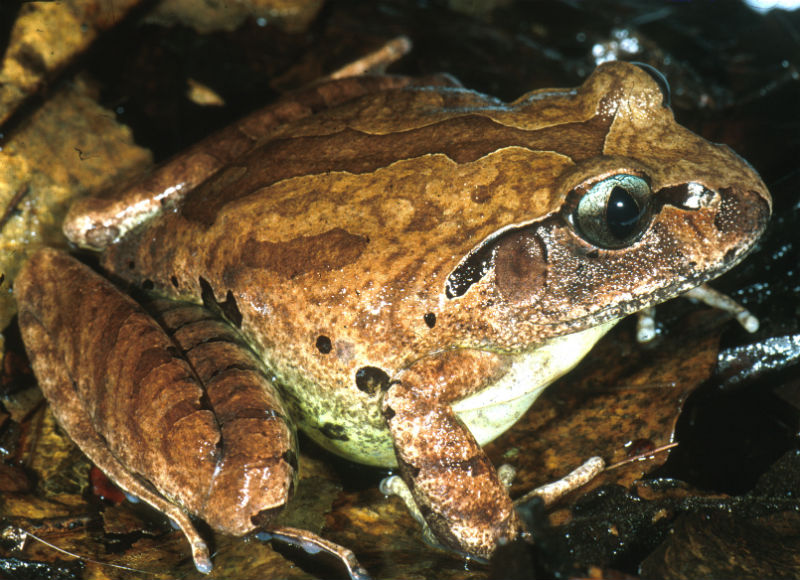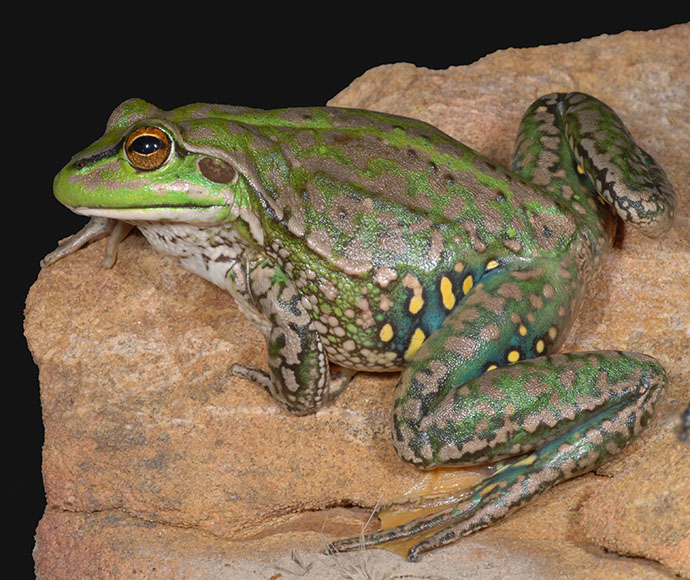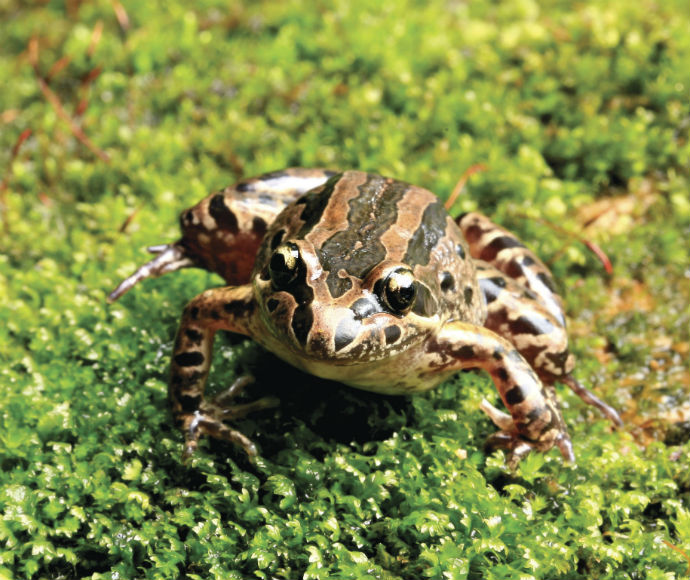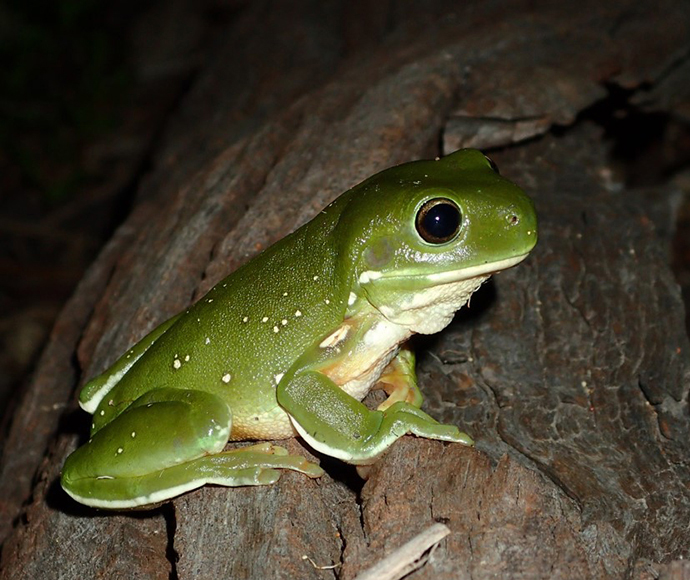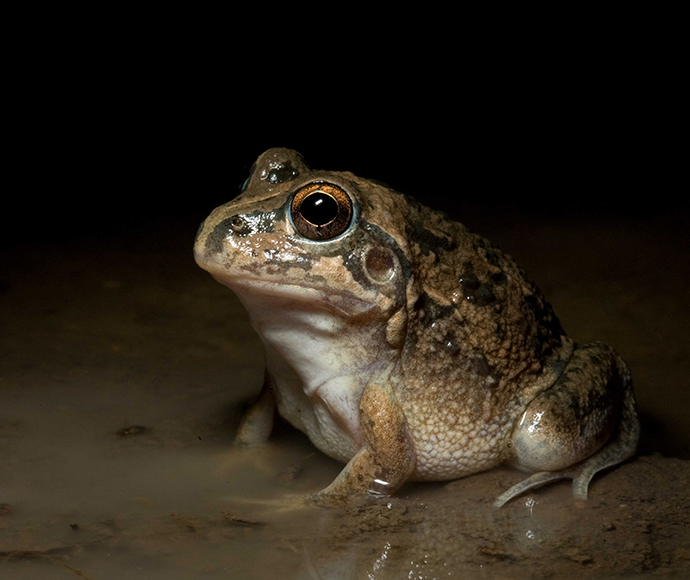Frogs that live in wetlands
Of the 71 frog species known in New South Wales, 47 are dependent on wetlands.
Common wetland frogs include the striped marsh frog, brown-striped grass frog, spotted grass frog, green tree frog and red-eyed green tree frog.
Because many frogs live in or around wetlands that are only intermittently wet, some have adapted to surviving long dry periods.
For example, 15 species of frog occur in the Macquarie Marshes and 7 of those live underground during long dry periods. These include the striped burrowing frog, ornate burrowing frog, water-holding frog and crucifix toad.
Why do frogs need wetlands?
Frogs and tadpoles have thin, porous skin, through which they absorb chemicals from the air and water. For this reason, more than any other terrestrial animal, they need water to survive. Most wetland frogs have very limited tolerances for drying.
Frogs also need water to be able to reproduce. Local rainfall can create temporary pools suitable for some species to breed. However, most species depend on wetland flooding to breed, particularly in inland New South Wales, where water can be scarce for years.
The majority of frogs in inland wetlands are most active in spring and summer and have a preference for wetlands with longer periods of water pooling. The timing of flooding also has a strong influence on which species are able to breed.
Aquatic vegetation provides shelter for adult frogs and enables the growth of biofilms and organic matter, which are important food sources for tadpoles.
While most common frogs live in or around fresh water, many live in coastal waters, including the endangered green and golden bell frog. It thrives in water bodies that are unshaded, are free of predatory fish such as Gambusia (plague minnow) and have grassy areas and sheltering sites nearby.
Threats to frogs in wetlands
Eighteen species of frog – a quarter of all frogs in New South Wales – are listed as threatened under the Biodiversity Conservation Act 2016.
They include:
- alpine tree frog
- green and golden bell frog
- northern corroboree frog
- southern bell frog
- southern corroboree frog
- sphagnum frog
- stuttering frog
- wallum froglet.
The main threats to wetland frogs and their habitats in New South Wales are:
- alterations to the natural flow regimes of rivers, streams and their floodplains and wetlands
- draining of wetlands for agriculture or urban and industrial development
- predatory behaviour by exotic fish such as carp, goldfish and gambusia (plague minnow)
- climate change
- infection of frogs by the fatal disease amphibian chytrid
- pollution of wetlands by chemicals and runoff from the land
- removal of fallen timber, leaf litter and other ground cover, because these provide cover from the elements and from predators
- mining and harvesting of peat and sphagnum moss
- introduced animals such as horses, rabbits, foxes and pigs.
Some of these threats are sufficiently serious for them to be listed as key threatening processes under the Biodiversity Conservation Act 2016.
